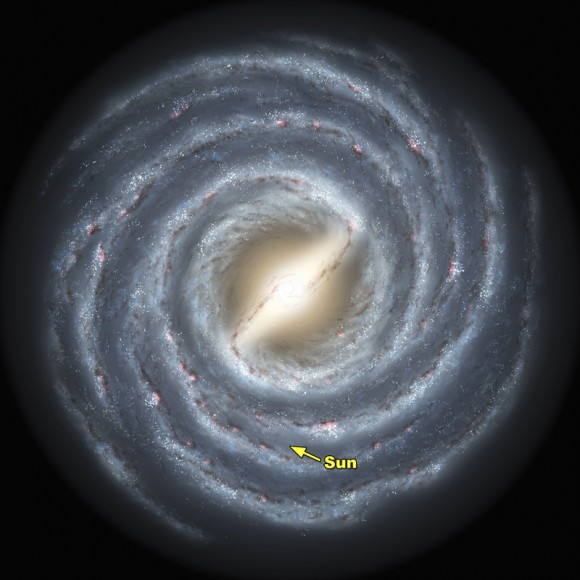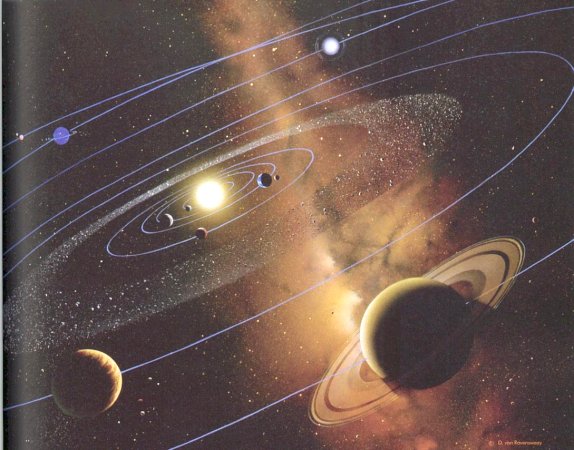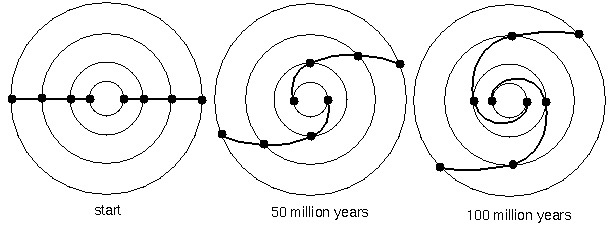
The planets in our solar system orbit around the sun. One orbit of the Earth takes one year. Meanwhile, our entire solar system – our sun with its family of planets, moon, asteroid and comets – orbits the center of the Milky Way galaxy. Our sun and solar system move at about about 500,000 miles an hour (800,000 km/hr) in this huge orbit. So in 90 seconds, for example, we all move some 12,500 miles (20,000 km) in orbit around the galaxy’s center.
Our Milky Way galaxy is a big place. Even at this blazing speed, it takes the sun approximately 225-250 million years to complete one journey around the galaxy’s center.
This amount of time – the time it takes us to orbit the center of the galaxy – is sometimes called a cosmic year.
See a range of estimates for the length of a cosmic year here.

By the way, in the past when we’ve talked about this subject, people have commented on the difference between the words rotate and revolve. The word revolve means to orbit around another body. Earth revolves (or orbits) around the sun. The sun revolves around the center of the Milky Way galaxy.
On the other hand, rotate means to spin on an axis. The Earth rotates every 24 hours. The sun rotates, but not at a single rate across its surface. The movements of the sunspots indicate that the sun rotates once every 27 days at its equator, but only once in 31 days at its poles.
What about the Milky Way galaxy? Yes, the whole galaxy could be said to rotate, but like our sun, the galaxy is spinning at different rates as you move outward from its center. At our sun’s distance from the center of the Milky Way, it’s rotating once about every 225-250 million years – defined by the length of time the sun takes to orbit the center of the galaxy.

Bottom line: The planets in our solar system orbit (revolve) around the sun, and the sun orbits (revolves) around the center of the Milky Way galaxy. We take about 225-250 million years to revolve once around the galaxy’s center. This length of time is called a cosmic year.











